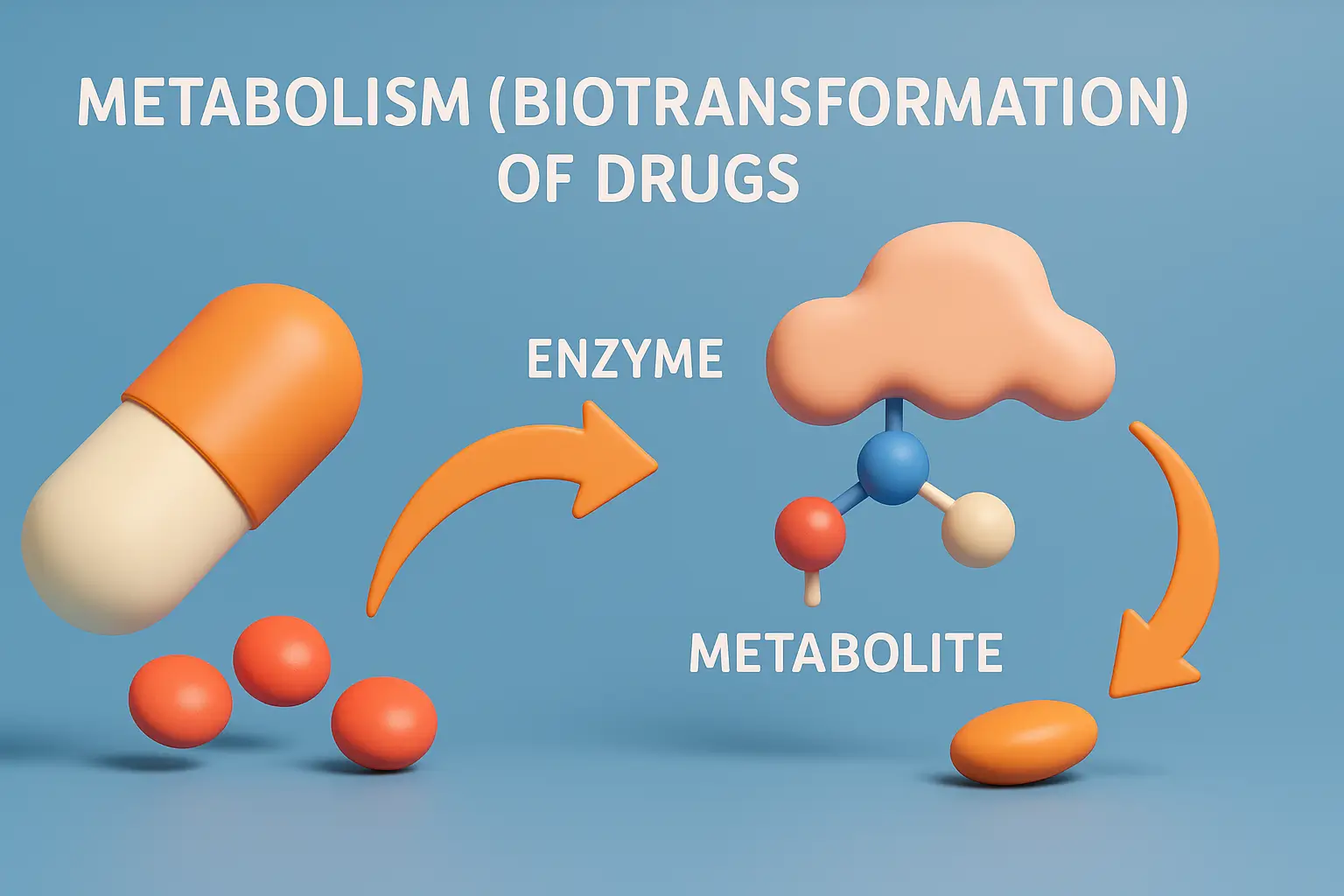Metabolism of drugs involves enzymatic conversion into active or inactive metabolites for easier elimination.
Definition to Metabolism of drugs:
- It is the process by which drugs are chemically altered (usually in the liver) to make them more water-soluble for excretion.

Sites:
- Primary: Liver (most important).
- Others: Kidney, lungs, intestines, plasma.
Phases of Metabolism:
Phase I (Functionalization reactions):
- Reactions: Oxidation, reduction, hydrolysis
- Introduce or expose a functional group (–OH, –NH2, –SH).
- Enzymes: Mainly Cytochrome P450 enzymes (CYP450).
- Converts lipophilic drugs to more polar forms.
Phase II (Conjugation reactions):
- Drug or metabolite from phase I is conjugated with another compound (e.g., glucuronic acid, sulfate, glycine).
- These reactions increase water solubility and promote excretion.
- Example: Glucuronidation of morphine.
Significance of Metabolic Enzymes
- Cytochrome P450 Enzymes:
- Large family (CYP3A4, CYP2D6, CYP2C9, etc.).
- Responsible for the metabolism of many drugs.
- Genetic polymorphisms can affect the expression of these enzymes (fast vs. slow metabolizers).

